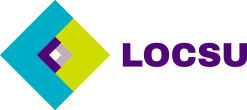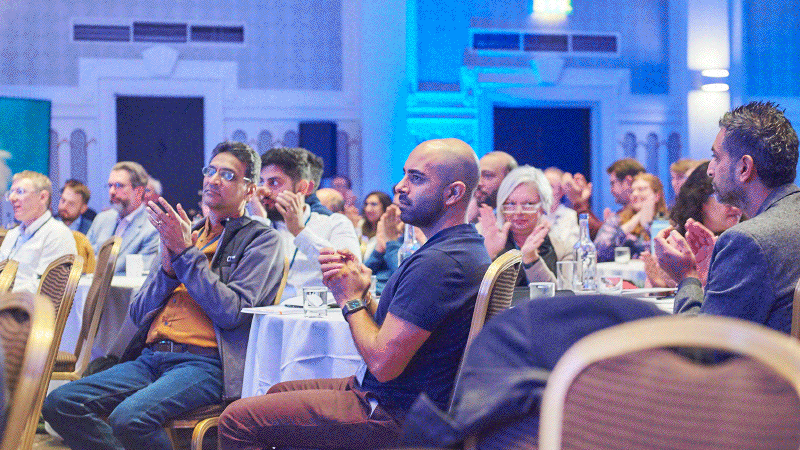Optometry First
Early Adopters Demonstrate Strong Potential for Further Roll Out

The aim of Optometry First is to fully utilise the core competencies and skillsets within primary eye care to achieve optimum outcomes for patients from the first point of contact and resolve eye care problems as quickly as possible. The model also aims to ensure the best use of primary and secondary care resources by monitoring and managing low-risk long-term conditions in primary care where possible, releasing secondary care resources for more specialist care.
The model was launched in 2021–22 with a call for expressions of interest from integrated care systems (ICSs) seeking to become early adopters of the model. There was strong interest from all seven NHS regions, with 17 ICSs registering for consideration. LOCSU worked with NHS England to identify three applicants that met core selection criteria including:
- Having substantive scope for improvement
- Availability of appropriate workforce
- Having clinical support and dedicated clinical leadership
- Financial commitment
- Willingness to work with NHSE for sub-specialty coding
- LOCSU and LOC support
The three early adopter regions selected were: Bassetlaw (North East & Yorkshire Region – moving to Midlands region following boundary change); Isle of Wight (South East region); and Sefton (North West region).
To provide a genuine test of the model as a new service implementation, it was critical that the early adopter regions differed from each other so they would approach and experience the rollout in different ways. This would identify as many different hurdles and opportunities as possible so these can be anticipated and addressed in future for the benefit of subsequent roll outs.
Zoe Richmond, LOCSU Clinical Director and NHS England NECRTP Optometry Lead, believes that choosing the right locations to launch the model initially will be key to future success, saying: “The three regions have core characteristics that differ from each other, but that are found in other areas around the country. By selecting places with differing challenges, we can identify and address a wider range of issues in a much shorter time frame. This will give the next wave of adopters confidence that we are developing a bank of expertise for them to draw on when they roll out Optometry First in their own area.”
Targeted Support From LOCSU
LOCSU recognised that the LOCs hosting the three early adopter regions would need targeted support to have the best chance of success. Ian Silk, business manager for Hampshire and Isle of Wight LOC, was appointed in a project role to provide additional capacity. Ian was already supporting his own LOC with the rollout, making him the ideal person to provide peer support to the other early adopter LOCs.
Ian reflects on his experience supporting Optometry First early adopters: “In Hampshire we have a strong committee that when required can work together and provide support for specific projects as in the case of Optometry First on the Isle of Wight. A key learning point from the project was to ensure secondary care Ophthalmologists were on board from the start of any pathway discussions. We did have a delay to the pre- cataract pathway because the project team had failed to engage ophthalmologists early.
“With additional support from LOCSU’s Optical Leads we were able to provide support via regular Teams meetings for the LOC Chairs enabling them to voice their concerns and start to think differently, not in isolation.”
Ian Silk, Isle of Wight LOC
“When supporting the two other LOCs, it was apparent that boundary changes resulting from CCGs becoming ICBs/ICSs were also having an impact – something we hadn’t experienced in the Isle of Wight roll out – as well as the effect of varying dynamics with Ophthalmologists from differing Trusts.
“With additional support from LOCSU’s Optical Leads we were able to provide support via regular Teams meetings for the LOC Chairs enabling them to voice their concerns and start to think differently, not in isolation. We encouraged them to share information regarding Optometry First with their local contractors, reaching out and garnering support from the same contractors to share the workload and identifying where the positive support could come from in respect of the ICBs and Ophthalmologists, culminating in an event to highlight the local benefits of Optometry First.”
Rationale For Optometry First Rollout
Throughout the early adopter phase, there was a determination to avoid a top-down, prescriptive approach and instead build momentum collaboratively among the multiple stakeholders in each region. Zoe explains: “Rather than attempt to develop a single, inflexible approach to Optometry First implementation, we encouraged stakeholders to share our vision that, in five years’ time, eye care can be delivered using existing skills and infrastructure and in partnership with hospital eye services, in an integrated way of working.”
The first step in this approach was to identify the immediate needs and priorities in each area. These varied significantly due to differences in population demographics; the primary eye care pathways already in place; the existing relationships between primary and secondary care providers; and the local workforce pressures across the care pathway. Consequently, each early adopter started their Optometry First journey in a unique place with quite different first phase activities.
The national team had to learn as much as possible about the team dynamics, culture, inter-organisational relationships, and political environment in each early adopter region so appropriate support and facilitation could assist progress where needed. In particular, different stakeholders’ varying appetites for change had a definite impact on the programme, with uncertainty sometimes translating into resistance.
What Has Worked Well?
- Considering specific local need as the starting point. This has helped to build the case for change. Where there is a clear requirement for improvement, stakeholders can see the logic of how a new approach will benefit patients and relieve pressure on secondary eye care
- Having dedicated staff to lead and implement change across all the providers. The model of having a prime provider for the Optometry contract, with a dedicated team or named service leads to support implementation utilising already well-established relationships with the single provider and commissioner, hospital eye service, LOCs etc
- Using primary care to audit new and backlogged referrals to identify opportunities for redirecting referrals into Optometry First. This was a valuable first step when new pathways were being created in Optometry First and ultimately helped reduce pressure on secondary eye care services
What Lessons Were Learned?
- The existing pathways in place in an area form part of the foundation of Optometry First. These need to be robust before an Optometry First service can be developed. If the key structures and relationships aren’t in place around these existing pathways, this can cause challenges when seeking to build on them
- A phased approach is preferable to a “big bang” style implementation. All three early adopters agree that a big bang approach doesn’t work as it fails to take key stakeholders along on the journey. A phased approach is key to building confidence between primary and secondary care
- Technology should be viewed as an enabler, not a driver or outcome. New technology is needed to support Optometry First, but it should not be viewed as a target or end goal of the programme
NOC Workshops Shared Progress and Challenges
During NOC 2022, commissioning managers from NHS England, Bassetlaw, and Hampshire & Isle of Wight joined Zoe to lead a presentation and workshop sessions on Optometry First. The interactive sessions introduced three of the challenges encountered and invited delegates to debate them. The challenges discussed were:
- Workforce: How is workforce an enabler to eyecare transformation and how do we implement Optometry First with our current capacity challenges?
- Working in partnership: How do we become a system partner?
- Clinical confidence: How do we build clinical confidence in primary care, within secondary care teams
These were valuable sessions allowing a wider cohort to engage with Optometry First.
Optometry First Reduces Waiting Lists in Bassetlaw
In 2021, due to capacity pressure exacerbated by COVID-19, the average wait for an appointment with the Hospital Eye Service in Bassetlaw was 50 weeks. 4378 patients were waiting for a first appointment.
The Optometry First Team identified the local need to reduce hospital service demand and better understand referral activity with the aim of introducing new pathways utilising primary care capacity and capability.
An audit of backlogged referrals identified referrals suitable for optometric management. Working within the Optometry First Framework, new pathways were commissioned to build a comprehensive optometry service to receive the redirected activity and better manage low risk activity within first contact care.
Results
Referrals were redirected for management in primary care optometry, resulting in a reduction in demand for ophthalmology services with a corresponding reduction in waiting times. 56% of paediatric referrals were considered suitable for optometry, with 75% fully managed, whilst 23% of adult referrals were redirected optometry, with 87% fully managed, resulting in a reduction in demand for ophthalmology services.
Evaluation and Next Steps
All three early adopters have achieved success through implementing Optometry First. A strong bank of knowledge and experience has been created that will benefit future implementation.
Zoe Richmond outlines the next steps: “There is lots of great work going on. Now we need to collate evidence and learnings to roll Optometry First out to other areas. We know that the pathways work clinically, and we know that there is appetite; we now need to establish what that means for each local system so we can support effective roll out.”



